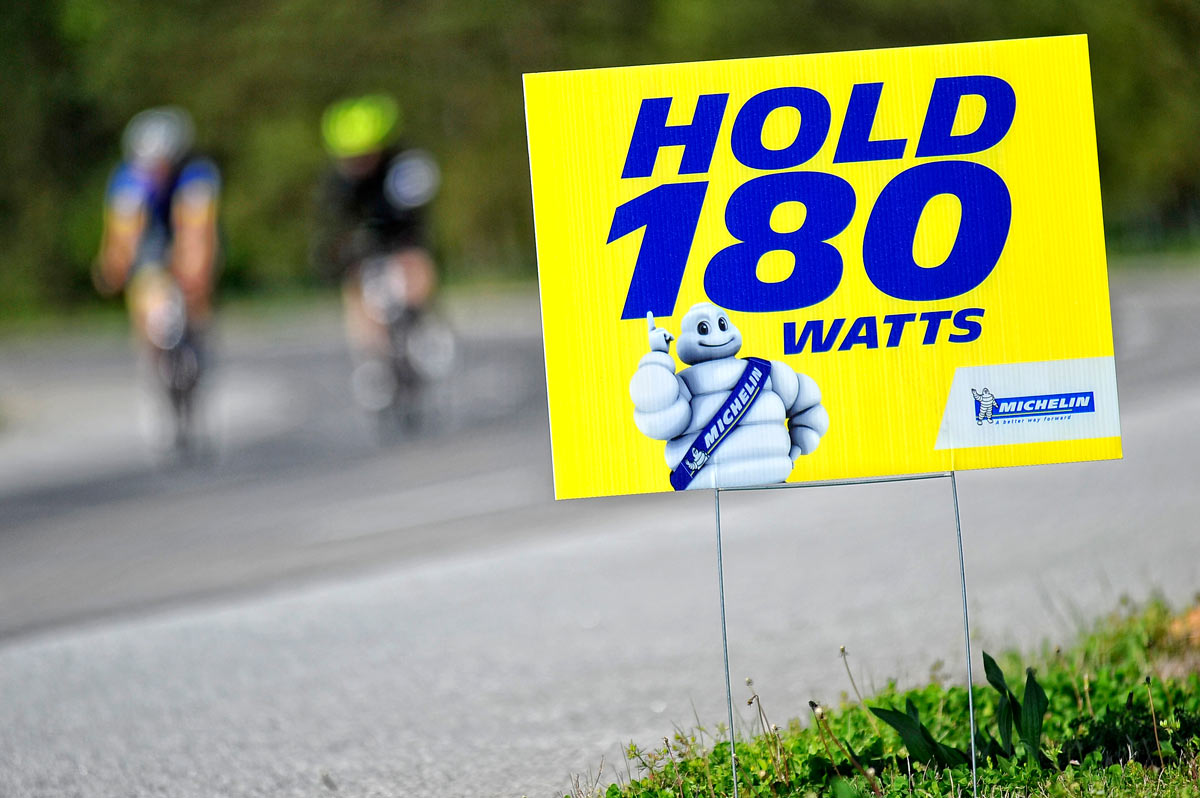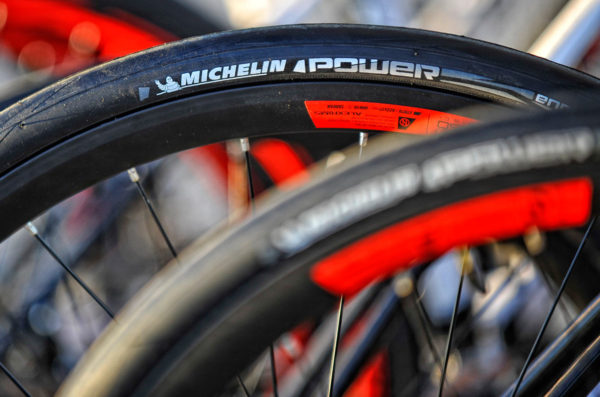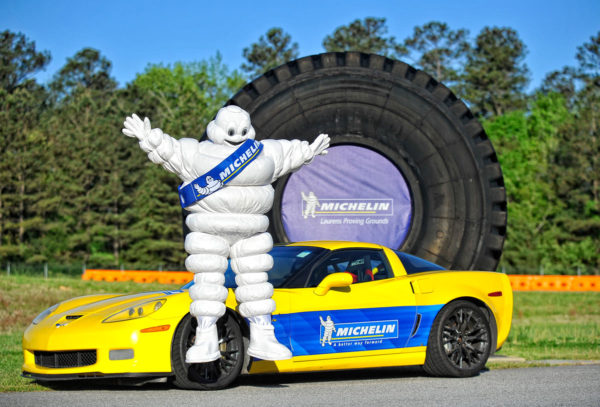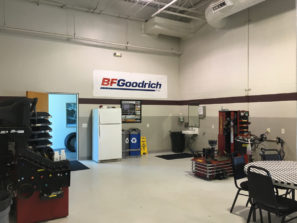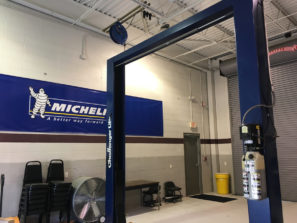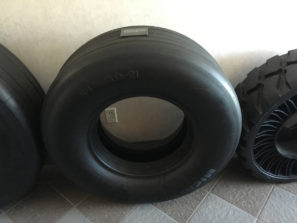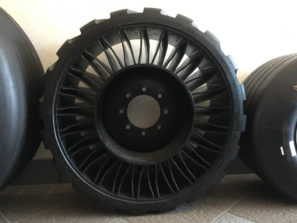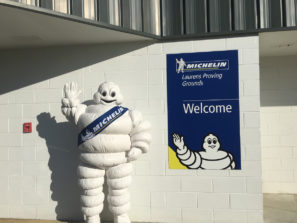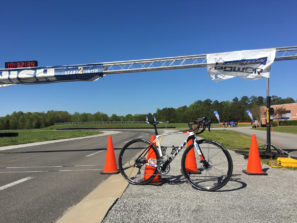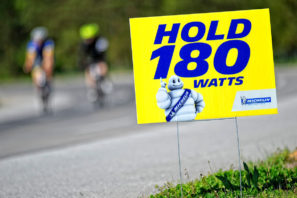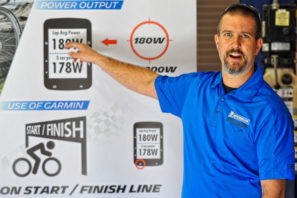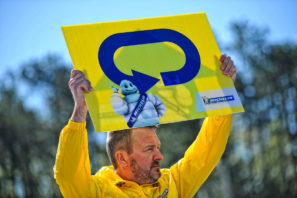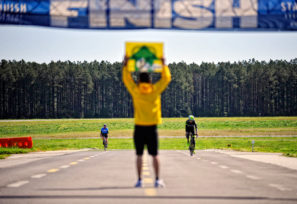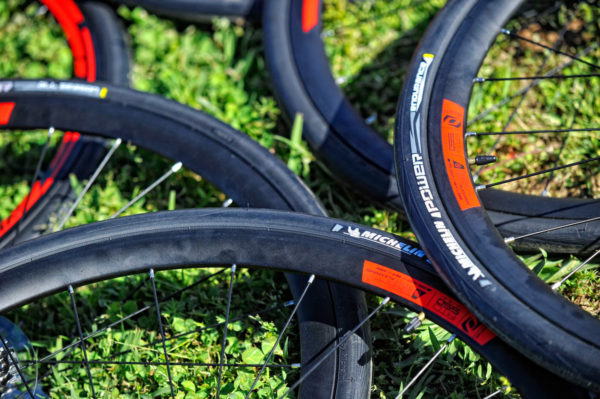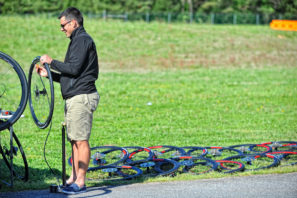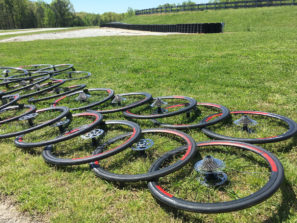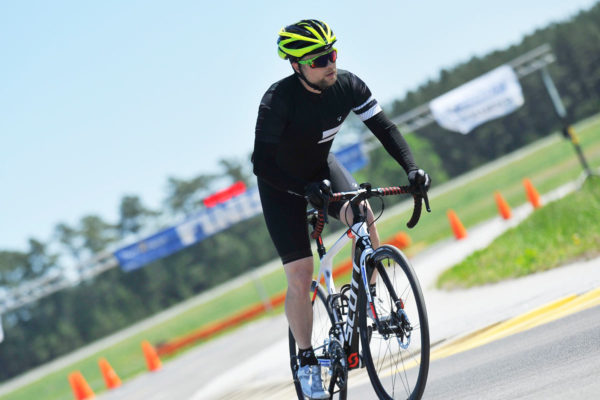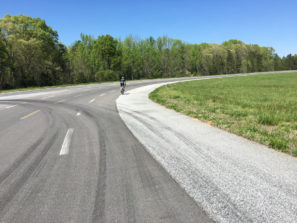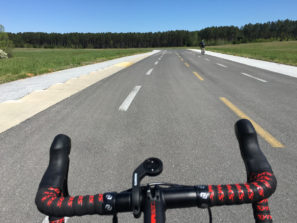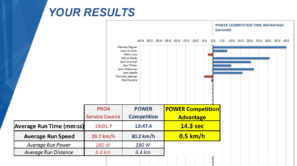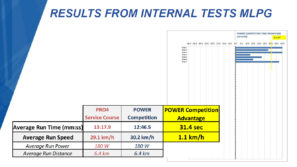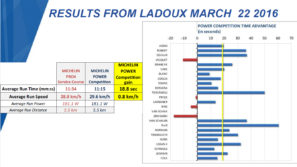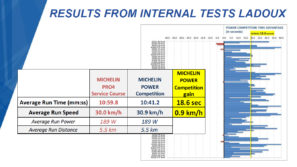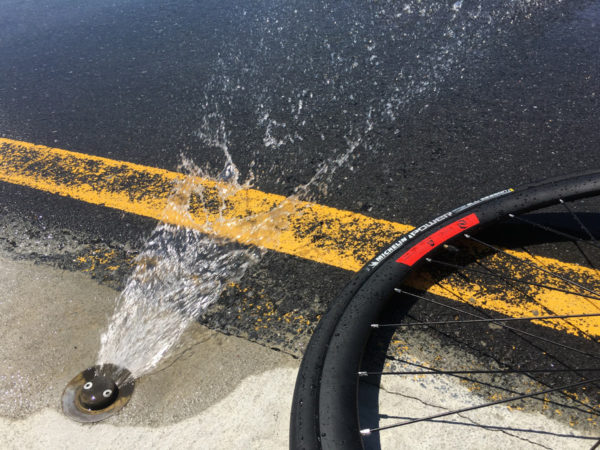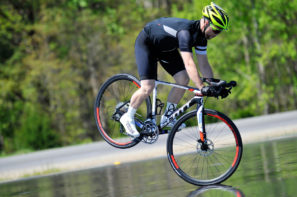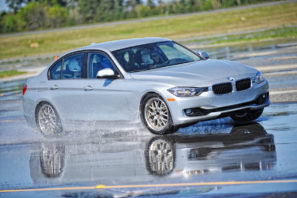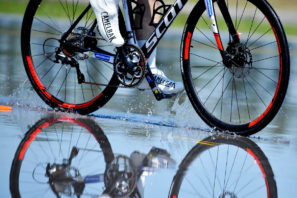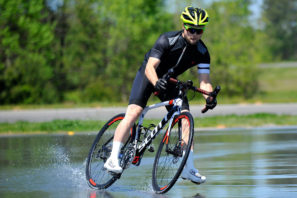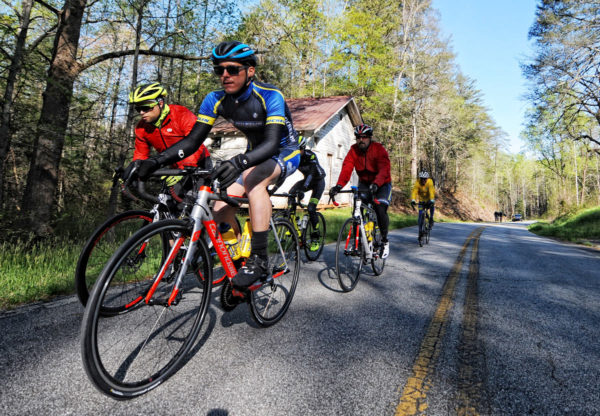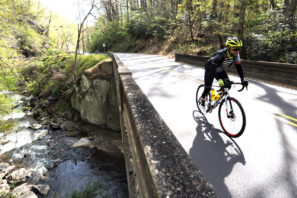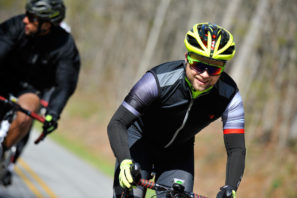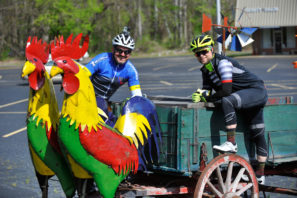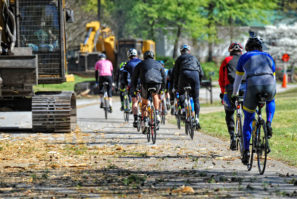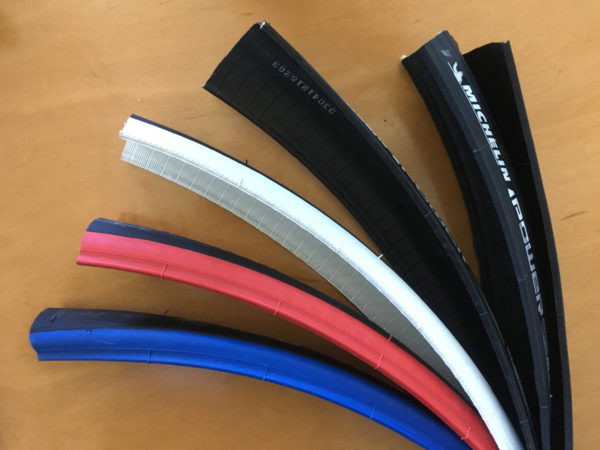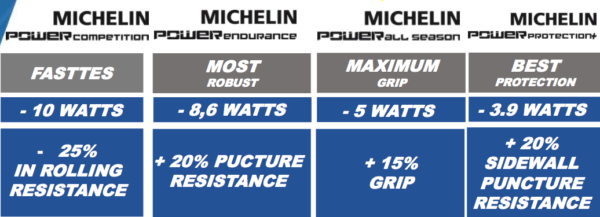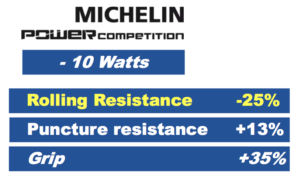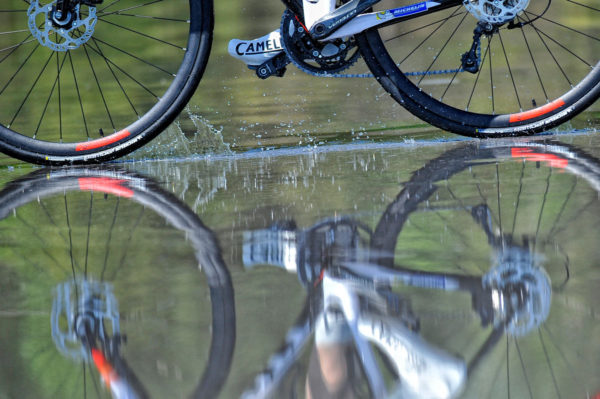
Everybody loves free speed, right? Based on the latest trend to incorporate everything aero, it seems that the ability to shave a few seconds off your time by simply switching components is too tempting for a lot of riders to resist. Now what if you could gain more speed than an aero wheel set would provide, just by switching your tires? Not to mention you get better grip and puncture protection as well?
Sounds to good to be true, right? It’s for real. Or at least that’s why Michelin invited us out to their proving grounds in Laurens, SC. We were there to ride the new Michelin Power tires and see for ourselves whether their claims held true….
Superseding their previous Pro series, Michelin positions the Power range the new reference. That’s due to the fact that rather than just making the tires faster, they also provide better grip and even increased durability and puncture resistance in line with Michelin’s Total Performance approach to design. It’s clear after spending a little time with Michelin that there is a lot more to their engineering than meets the eye.
In order to experience the tire claims for ourselves, we were invited to the Michelin Laurens Proving Ground in Laurens, SC, which is a short drive from the company’s U.S. headquarters in Greenville, SC. The sprawling test facility is over 3,000 acres with nine test tracks that include multiple surfaces, pot holes, a wet test track, an asphalt lake, even an ingrained camera that is able to see the tire foot print of the contact patch when a vehicle drives over it. The track is so big that they allow deer hunting during the proper season to control the deer population around the tracks. Having Bambi walk out onto the track during top speed testing would be no good at all.
The Laurens facility is joined by two other main testing centers which include Clermont-ferrand, France, which is a 1,200 acre facility mainly used for motorcycle testing, and Almeria, Spain, which is a gargantuan 7,400 acres where Michelin tests much of their agriculture and earth mover products. The point Michelin was trying to drive home was that they are a world leader in tire technology and make tires for almost every vehicle including the now retired Space Shuttle (above with the Tweel). With something like 22,000 employees in North America (120,000 world wide), Michelin is certainly a large force in the tire market. And while you may think that their advancements in other tire markets aren’t necessarily congruent with cycling, the bicycle team has drawn a lot on Michelin’s varied experience, including MotoGP.
The real reason we were at MLPG was to get our own crack at testing one of the Power line’s greatest claims – that the Power Competition will save you an impressive 10 watts of rolling resistance. Michelin calculates that of an average rider’s energy, 10-15% is lost to rolling resistance. For motorized vehicles that can be upwards of 20% and in an era of improved fuel efficiency standards, you better believe that Michelin has been doing everything they can to reduce rolling resistance without harming performance.
Just what is 10 watts? According to Michelin, 10 watts is equivalent to 1 min 04 seconds on Alpe du Huez, 8 meters in a 30 second sprint, 4 min 37 sec on the Ironman bike leg, 3x times the benefit of the average pair of aero wheels, 54 seconds on a time trial, or 776 meters in an hour record attempt. All by changing tires. Compared to the Pro 4 Service Course, the Power Competition boasts 25% less rolling resistance, 20% better puncture resistance, and 15% better grip. Those gains in rolling resistance are thanks to a new Race rubber compound that consists of a blend of natural rubber, elastomers, and silica that was created with knowledge gained from MotoGP, but also through the optimization of the new 180tpi casing with an Aramid breaker.
But how to test those claims? Michelin has already extensively tested the Power series through external machine tests independently run through Wheel Energy labs in Finland. And they verified the claims through both internal and field surveys of 200 riders on three continents. But as they say the proof is in the rubber compound (something like that), so to see for ourselves we were set up to do the same test that Michelin has performed countless times.
Set up on the T2 Max Dry test track, we would ride two 3.2km laps for a total of 6.4k per tire. Our Scott Solace 20 Disc test bikes were set up with two sets of wheels, both Rolf Prima Vector Discs. On one wheelset was a pair of Michelin Pro 4 Service Course, on the other – the new Power Competition. The tires were the same size, and inflated to the same pressure. The goal was to maintain a constant average of 180 watts around the track which was tracked with a Stages power meter synced to a Garmin GPS. To make sure we remembered to start and stop the lap on time, we had some lovely assistants from Michelin with signs at the start/finish. All of the bicycles were also chipped with a timing system tracking each bike. After a warm up to familiarize us with the track we tested on set of tires, switched, then tested the second.
I wish that the tires weren’t labeled so we didn’t actually know which tires we were riding, but I will say that without even riding the Pro 4s yet, I swear that I could feel that it was faster. Test conditions were a bit challenging for us due to the wind speed, but at 4 m/s they were lower than Michelin’s typical cut off at 5 m/s. The wind made it a lot more challenging to maintain an even 180 watts, but at the end of each ride my average was 180 on the dot. Note that the photo above was taken after testing was complete which is why there is no Garmin – they were immediately collected as we crossed the line to compile the data and make the charts below.
Not surprising, the Power tires did prove to be faster than the Pro 4s. Personally, I was just over 20 seconds faster on the Power Competition, with a group average of 14.3 seconds and 0.5km/h faster.
Our group showed the smallest improvement (still an improvement) which Michelin attributed to the challenging wind conditions. Michelin ran a control tire with a rider in both sessions that showed a small time change due to the wind from one session to the other, but since some riders were on one tire while others were on another, the average time difference should be fairly accurate. Clearly there is some variance and even a few that were slower than the Pro 4s, but Michelin chalks this up to errors either with the operation of the Garmin or inability to maintain a constant wattage. The takeaway is that test after test, the majority of riders showed a large improvement over just 6.4km.
If that speed advantage also includes a tire that is more durable and has better grip than the previous model, it looks like a win, win, win.
While we were at MLPG we also had a chance to take on the wet test track by both bike and by car. Thanks to low sprinkler heads every 5-10 ft and a consistent 0.5% slope, the Wet Road Course maintains an average water depth of 1.5mm over low friction asphalt. It’s WET. Even so, with the Michelin Power Endurance or All Season, there was no breaking the tires loose unless you forced it by over braking and power sliding the bike. It was interesting to see how well you could pull a stoppie on the wet track as this seemed to illustrate Michelin’s “Disc brake ready” claim. It might seem crazy to think that a tire would need to be disc brake ready, but they’ve found that in order to cope with the higher braking power without just skidding, the tires needed some changes that were also evolved from MotoGP tires.
Realistically, the threat of crashing kept any of us from exploring the true limits of traction (which is scary high), but Michelin has this covered with their special test bike they use in France. Essentially an E-Bike without cranks, the rider wears full motorcycle protection and rides in circles on a wet track to find the limit of the lean angle.
Michelin tires are also thoroughly tested in the lab with wet brake traction (flat rock surface tarmac) where the higher the force, the better the grip. Compared to Brand A (their closest competitor), the All season scored 34.2kg compared to 26.8kg from Brand A. Down the line, the Competition scored 26.9, the endurance at 26.7, and Brand A’s competition tire coming in at 24kg. That’s a lot of numbers and information, but it boils down to the fact that all of the new Power tires have improved wet grip, but the All Season sees a 15% boost in traction thanks to 13% of that from the compound and the remaining 2% due to tread design.
To sort of highlight the same concept but on a larger, faster scale, we were given the chance to drive two vehicles around the short Wet Road Course. Our rides included a minivan (Boo.), but with stock Michelin tires (Yay!). And a BMW 3 series (Double Yay!), but with what Michelin considers a tier 4 tire -Rikens to be exact (Boo.). The minivan’s tires were slightly used, but exactly what you’d find on the lot. The BMW was fitted with aftermarket wheels and brand new tires.
We jump in the mini van and instantly feel like Michael Schumacher taking the kids to soccer practice. The vehicle is composed, easy to push the limit, and also easy to recover once we pushed past that limit. The BMW on the other hand was terrifying – especially if you’re in the back seat. The tires were extremely unpredictable and resulted in a completely vague feeling at the wheel. And if you pushed past the point of traction? Good luck.
Keep in mind that the Rikens were considered a performance tire while the Michelin is meant for your average grocery getter, and you start to see what Michelin is getting at. There is a lot more to tire design than just making something that is black and round with a sporty tread pattern.
Our final day with Michelin was spent around Paris Mountain exploring the roads known for the Hincapie Gran Fondo. Starting from Hotel Domestique in Traveler’s Rest, we essentially rode the Medio Gran Fondo route and it was incredible. Rolling through the beautiful (but cold!) hills of North and South Carolina with a few decent climbs thrown in for good measure, we were on either the Power Endurance or All Season. At one point we rode through a mine field of shredded trees and bushes, and yet not a single flat among the group. Not bad. I can’t say that I felt the same speed from the Endurance tires I rode compared to the Competitions, but they also didn’t feel slow either – and they held up to my skids, wheelies, and “short cuts”. What can I say? I like to have fun on bikes.
At the end, I honestly came away impressed. Not just from the improvements offered by the Power range of tires, but by Michelin’s thoroughness in development and testing. It can be hard to tell if those pricey new tires will really improve your ride, but with the Michelin Power series, it looks like the real deal.
Michelin Power tires will be offered in the Competition, Endurance, All Season, and the U.S.-only Protection+, with the Endurance offered in 23 and 25mm with black, white, red, and blue tires, and a 28mm in black only. The Competition and other models will be black only, and available in 23 and 25mm. With the exception of the Protection+ coming on June 1, the other tires are all currently available.
